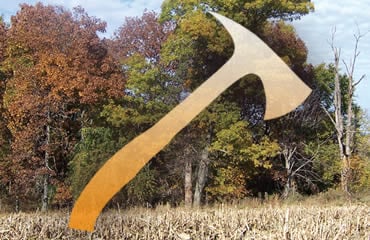I am a hunter who prefers hang-on or lock-on style treestands. Screw-in tree steps are my favorite method for getting up and down.
As you’ve probably experienced, getting tree steps started can be quite difficult in certain species of trees with thick or hard bark.
It can be a real pain to get a bite into wood, even with small screw-in accessories such as bow holders, gear hooks or backpack hangers. Mature oaks, hickories or other species of hardwoods are the toughest.
Years ago, I purchased a tactical tomahawk. One side has a pointed tip, which is perfect for knocking small holes in even the hardest of tree bark.
In the exact spot where you want your step to go, hit the tree with enough force to break through the bark and cambium layer.
Once you get into the meat of the tree, it’s easy for the screw point of the tree step to get a bite into the wood.
The tomahawk is small enough to fit into your pack, and you can use the hatchet end for other things.
— Editor’s Note by Tim H. Martin
Brian’s tip sounds easier than my old two-handed method of using a hammer and spike to start tree step holes.
Today, there are a lot of gadgets for starting tree steps, including special cordless drill bits that will perform the entire task. Small augers are effective, too.
Along these lines, here are a few more tips for using tree steps.
Remember to bring work gloves to turn the steps. A day of heavy-duty torquing will wreak havoc on your hands.
If you don’t own a tree step turner, a large set of vice-grips will help you get leverage on the stubborn steps.
I like to utilize a climbing stand when setting up hang-on stands. I climb the tree, attach my hanging stand and work my way down with the tree steps. It’s very important to use your safety harness and lifeline when doing this.
Remember to space the tree steps close enough together so they are easily reachable.
A good rule of thumb for spacing steps is the distance between the tips of your fingers and your elbow, or a little closer. This is the comfortable distance for you to step and reach.
If a shorter hunter will be using the stand, remember to space the steps closer.
Read Recent Tip of the Week:• Arrow Deflection String Test: For a couple of dollars and a few extra minutes of path-checking, you can use the arrow deflection string test to prevent a miss, or worse, a wounded animal.



